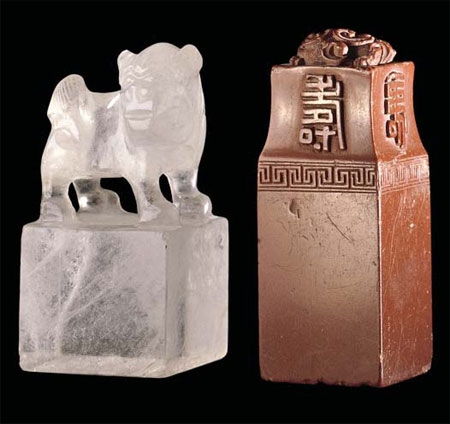Sealed, signed, and delivered

 |
| Seals were made from any material that could be carved or moulded. Provided to China Daily |
The two seals above, which are on display at the British Museum, once belonged to the collector Sir Hans Sloane. One is made of quartz crystal and shows a "dog of Fo" (a Buddhist lion dog). The other, made of red soapstone, has seal characters for long life.
Seals were made in China from at least the late Zhou Dynasty (c. 11th century-256 BC) for official, artistic, literary, commercial and personal purposes. They were commonly used instead of a signature. The seals were made from any material that could be carved or moulded.
In about the 14th century, soapstone (steatite) was found to be particularly good and is still used today. Seals made of attractive hard stones, such as the dog of Fo, were considered to have both aesthetic and intellectual appeal.
The script used on seals evolved from inscriptions. The earliest surviving inscriptions are found on oracle bones dating to about 1,300 BC, and good examples of inscriptions on bronze ritual vessels survive from the Western Zhou (c. 11th century-771 BC). Seal script became standardized during the Qin Dynasty (221-206 BC).
Date: On display
Venue: The British Museum, London
Website: http://www.britishmuseum.org
Today's Top News
- Xi calls for promoting volunteer spirit to serve national rejuvenation
- Xi chairs CPC meeting to review report on central discipline inspection
- Reunification will only make Taiwan better
- Outline of Xi's thought on strengthening military published
- Targeted action plan to unleash consumption momentum
- Separatist plans of Lai slammed






























